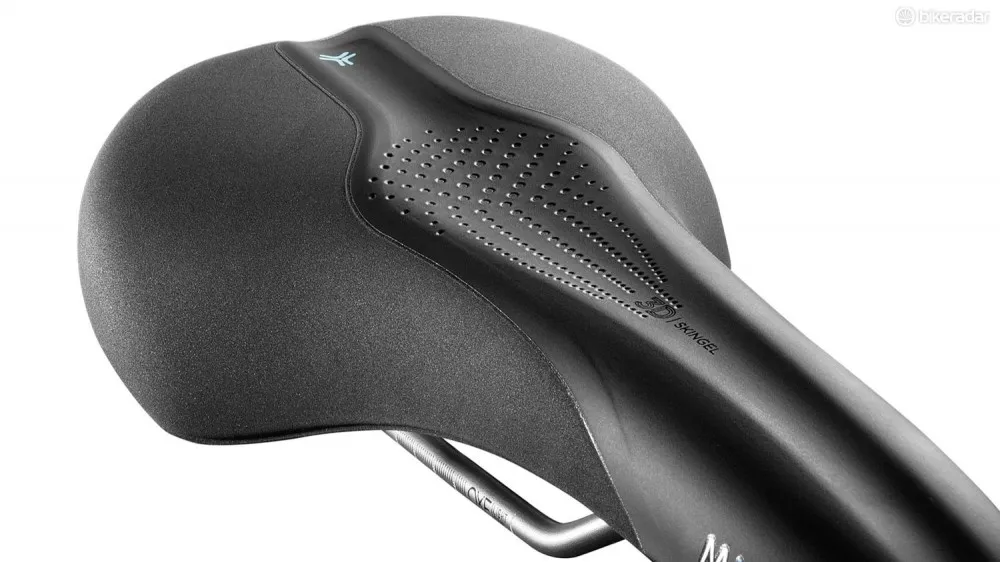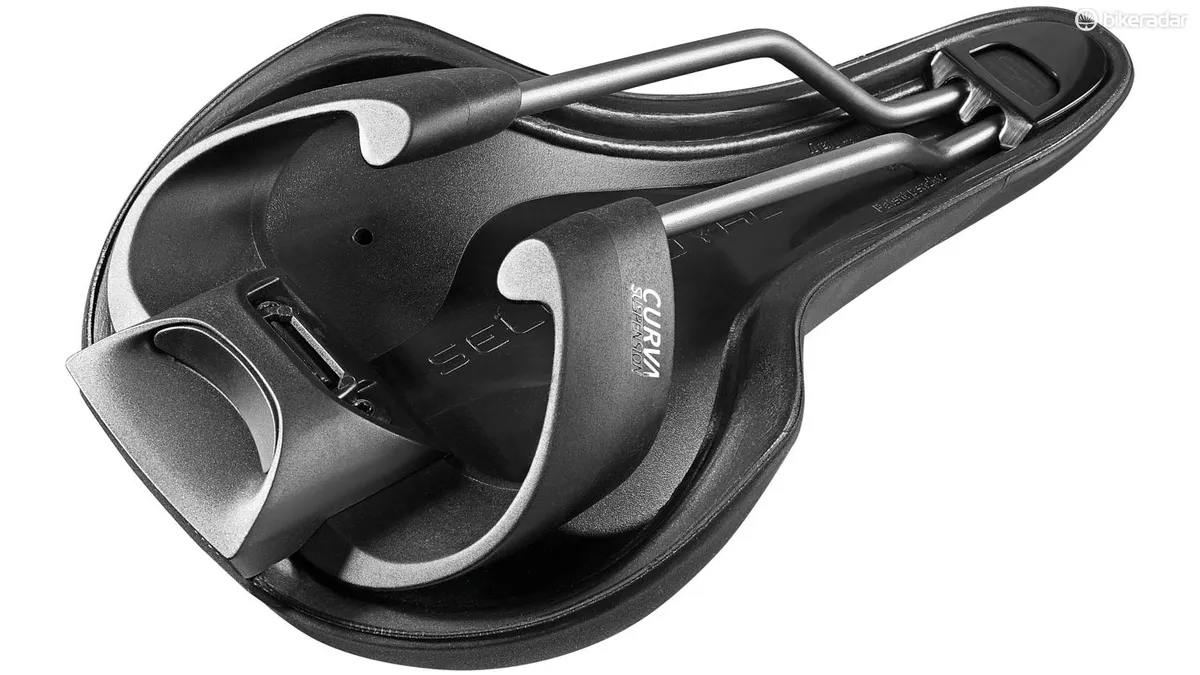Selle Royal has released Scientia, a range of nine perches via which the Italian firm is aiming to eliminate saddle discomfort, drawing around anatomical and ergonomic research conducted by the German Sport University in Cologne.
Selle Royal commissioned a series of projects with the German Sport University, which was founded in 1947 and is Europe's largest establishment of its kind.
Researchers took various measurements and observations from 240 individuals; 120 female and 120 male volunteers who were recruited to represent a good cross-section of the global population. The study included pressure mapping of saddles in use in different ride positions, and recording the distance between ischial bones.
Finding the right saddle width
Ischial bones, also known as sit bones, are key when it comes to getting a good saddle fit. Since they are the main contact point, they bear most of the body's weight.
The researchers found that female ischial bone spacing in the sample measured varied between 9cm and 17cm, with an average of 13.4cm – which is wider than the results for men. Male spacing varied between 7cm and 15cm with an average of 11.58cm.
Selle Royal concluded that, combined with the results from the pressure mapping gender study, individual ischial measurements had a bigger impact on comfort than gender.
Based on the ischial measurement research, the company decided to develop three width options for saddles, numbered 1 to 3. Saddle width 1 is suitable for riders with an ischial width less than 11cm, 2 is for riders with an 11-13cm width, and 3 is for individuals with an ischial width greater than 13cm.
Finding the right shape for a comfortable saddle
To determine the impact saddle shape and ride position had on the comfort of a ride, male and female test subjects rode for 30 minutes-plus on unisex saddles across the leading brands with incorporated pressure sensors. The ideal saddle shape should allow as even a distribution of pressure as possible across the saddle surface, and provide a degree of flex.
The research produced two particularly interesting findings.
The first of these was that a central hole isn’t necessary. Instead, Selle Royal has opted for a central reservoir or depression that uses a softer gel padding.

The saddle shape is based on pressure mapping research, including a central reservoir running the entire saddle length
Second, that the rear of the saddle should sit slightly higher than the the front of the saddle, to provide support for the ischial bones and also to prevent slipping back over the rear.
Based on the pressure mapping research, three saddle designs were developed. The first, Relaxed, suits the upright 90-degree position of a Dutch-style bike. The Moderate supports a 60-degree forward lean, while the Athletic suits a 45-degree position.
Selle Royal has also developed a new rail system, which it terms Curva suspension. This attaches at the rear of the saddle, rather than underneath, the main benefit of which is better shock absorption and pressure distribution. It also allows a degree of side-to-side flex while pedalling.
Women’s specific saddle?
Whether or not to produce women’s specific saddle was another question posed to the research team. With obvious differences in the soft tissue of each gender, the pressure map was also used to determine how much pressure these delicate areas were put under for each ride position, for men and women.
The conclusion Selle Royal draws from the data is that for riding positions of 30 degrees or less, a female specific saddle is not necessary – so long as the saddle is well designed, the soft tissue shouldn’t be bearing the weight of the rider.
Fit system
From a consumer perspective, what this boils down to is a relatively simple way to choose a saddle from the range.
First, a gel-filled pad identifies the location of your ischial or sit bones, which identifies which of the three saddle widths is recommended, giving you a number 1 to 3.

The Curva rail system attaches to the rear of the saddle, rather than at the base
Next, depending on what type of bike you ride and what position you are in when riding, you can identify which type of saddle – Athletic (A), Moderate (M), Relaxed (R) – is right for you.
These two figures together give you the ID of the saddle you are looking for. So for example, if you have sit bones 14cm apart, and are riding in a relaxed upright position such as on a Dutch bike, then you’d be looking for saddle R3.
Availability
The saddles are available now through various distributors and retailers globally. You’ll also begin to see the new Selle Royal range fitted to bike ranges from 2017.
While we’re interested in the background research, we would caution that 240 individuals is not a huge sample size, and as with any saddle comfort can be a very much a question of personal preference. There are no plans currently for saddle demonstration or trial periods, though Selle Royal did mention that certain individual distributors or retailers may offer this option independently.
Since the focus is comfort, Selle Royal doesn’t produce a saddle suited to a more race or steeply angled ride position. However, with other saddle brands such as Fizik in the Selle Royal portfolio, it hasn’t ruled out the data being used to develop products for these ranges.



